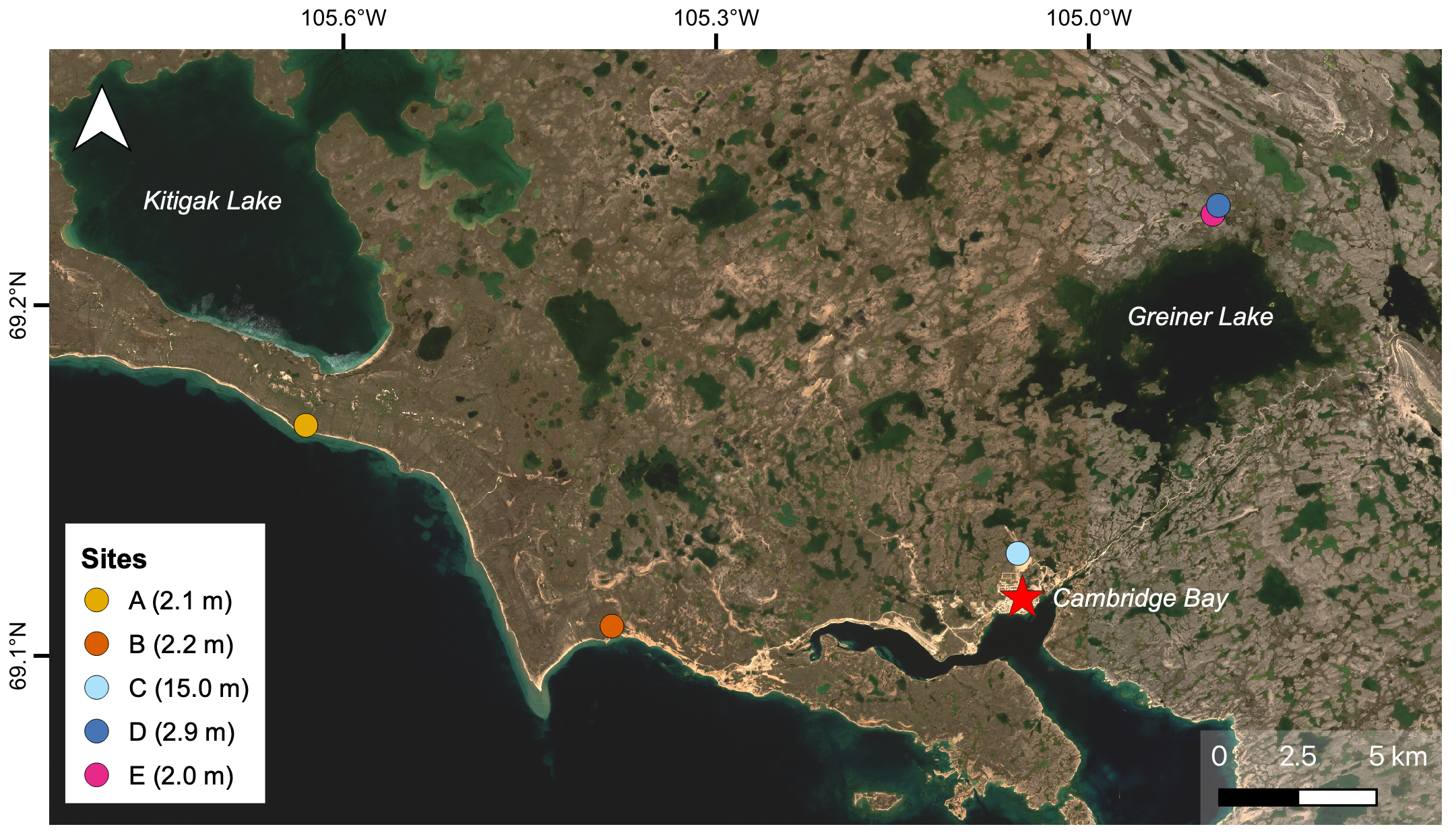Permafrost monitoring in Cambridge Bay
Author
- S. Coulombe, Polar Knowledge Canada, Canadian High Arctic Research Station, Cambridge Bay, Nunavut, Canada, stephanie.coulombe@polar.gc.ca
Citation information
Coulombe, S. 2020. Permafrost monitoring in Cambridge Bay. Polar Knowledge: Aqhaliat Report, volume 3, Polar Knowledge Canada, p. 28–29. DOI: 10.35298/pkc.2020.07.eng
Article
Global climate change has resulted in a warmer Arctic, with projections indicating accelerated modifications to permafrost in the near future. These changes have the potential to affect many aspects of the Arctic's terrestrial and aquatic ecosystems, as well as local communities. Decades of work led by Canadian universities and government agencies have provided important insights into the changing state of permafrost landscapes. However, the central Canadian Arctic remains largely underrepresented in terms of thermal monitoring, and very little is known about its permafrost conditions. The objective of this project is to gather baseline information on the thermal regimes and physical conditions of the permafrost in this part of the Arctic. As an initial step toward establishing a network for monitoring permafrost, our fieldwork activities have focused on the Cambridge Bay area (i.e., Kitikmeot Region, Nunavut), where no ground temperature data were available.
Four shallow boreholes were drilled to depths ranging between 3 to 4 metres (m) in different terrain units, since different soils will behave differently for the same change in temperature (Figure 1). All frozen cores and grab samples were photographed and described in the field for sediment types and cryostratigraphy, with emphasis on the sediment type, ice content, and ice patterns. The samples were kept frozen and stored at the Canadian High Arctic Research Station (CHARS) for further analysis (e.g., ice content and grain-size determination). In addition, an additional 15 m borehole was drilled within the community using an air rotary type of drill. The location was selected in collaboration with the hamlet of Cambridge Bay based on the following criteria:
- A relatively undisturbed area;
- Closeness to the community for easy access; and
- A safe distance from major travel routes for snowmobiles, ATVs, and road maintenance activities.
All boreholes were instrumented with automatic data loggers (LogR Systems Inc.) and thermistor cables equipped with temperature sensors. Hourly data acquisition began in November 2019. These monitoring sites will provide valuable records of active layer thickness and the temperature regime of the permafrost in the study area. Quantifying soil temperature has shown to be particularly important for understanding how permafrost may respond to current and future changes in climate. Soil temperature has also been recognized as a property that strongly influences many of the above- and below-ground hydro-biogeochemical processes. Once available, a summary of the results will be shared with stakeholders and the community.
Additional sensors (e.g., to measure snow depth, soil moisture, and snow temperature) will be installed in the summer of 2020 to complement the temperature data. The acquired data will be used to document the relationships between snow depth, snow temperature, soil moisture, ground cover type and the mean annual ground-surface temperature.

Figure 1: Map of the study area showing permafrost monitoring site locations near Cambridge Bay.
Polar Knowledge Canada
For media inquiries, contact:
communications@polar-polaire.gc.ca
Page details
- Date modified: